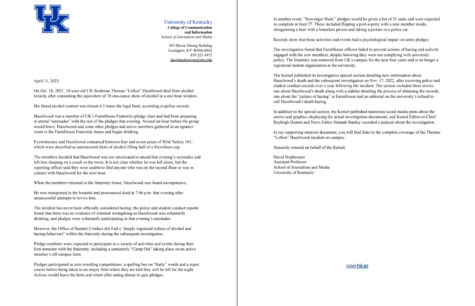MAC Lung Disease: Managing a chronic lung disease during the COVID-19 pandemic
March 29, 2022
(BPT) – The past few years have reinforced the importance of overall health, particularly respiratory health. For those living with a chronic lung illness, such as Mycobacterium avium complex (MAC) lung disease, taking precautions against respiratory illnesses is nothing new. However, for those living with MAC lung disease, the pandemic has reinforced how critical it is to make every effort to protect lung health, including being vigilant about doctor’s visits and tracking any potential signs the condition is worsening.
MAC lung disease is an infection caused by a type of bacteria called Mycobacterium avium complex, which may also be referred to as NTM lung disease. MAC bacteria are usually found in soil and water and can be breathed in during daily activities, such as showering or gardening. While most people who encounter MAC do not develop an infection because their lungs are healthy enough to clear the bacteria, people with lung conditions that can cause damage, including bronchiectasis, chronic obstructive pulmonary disease (COPD), pneumonia, or asthma, are more likely to develop MAC lung disease.
Management of MAC Lung Disease
MAC lung disease is a serious and progressive condition that can get worse if not treated which might lead to lung damage and worsening symptoms. However, Dr. Deborah Levine, a pulmonologist at UT Health Science Center in San Antonio, says there are ways MAC lung disease patients can help manage their condition and protect their health. She recommends patients consult their doctor about starting treatment, discuss making lifestyle changes and ensure they keep in touch with their doctors to monitor progress.
Many newly diagnosed MAC patients are initially prescribed a multidrug regimen which typically includes a combination of various antibiotics. Patients may remain on this regimen for months until they test negative for MAC lung disease, which is determined by a sputum test. A sputum test is a routine procedure for those living with the condition and it allows physicians to analyze a patient’s mucus for MAC bacteria.
For patients, a large part of managing MAC includes staying in touch with their care team, whether that’s during appointments or in-between them. When speaking with their care team, Dr. Levine encourages patients to ask questions including what to expect during their doctor visits, about their test results and CT scans, and also about what to expect during their treatment regimen. With today’s technology, there are several ways for patients to safely meet with their care team and ask questions. Dr. Levine shared her top tips for how patients can best stay in touch with their care team:
- In-person appointments: When a MAC patient has an in-person doctor visit, it will be important to check with their doctor’s office to understand what safety measures are currently in place. Many offices may require patients wear masks and complete health screenings to ensure all patients coming in are not putting others at risk. Furthermore, patients should ask if a family member or caregiver can attend the appointment with them. This can be especially important for newly diagnosed patients who may be learning about MAC or their treatment plan for the first time. In-person visits are beneficial for patients with MAC to help track their progress via sputum tests and CT scans and address any concerns they have with their treatment, including side effects and worsening symptoms from the condition.
- In-between appointments: For concerns that may come up in-between appointments, patients should know who to contact on their care team and how to best contact them for a quick response. It’s important patients reach out with any concerns, no matter how minor they seem, so their care team can help address them early and better manage their MAC. Patients can work with their team to find strategies that work best for them, but this is how I’ve been successful with staying in touch with my patients between visits.
- Virtual appointments: Virtual appointments are another great option for when patients may need more time with their doctor between in-person appointments that a call or message can’t cover. For these appointments, I encourage patients to treat it as an in-person appointment. Come to the appointment prepared with any questions, their medication list and have a pen and paper on hand to take notes. Patients can also have a family member or caregiver present to help take notes or be another ear to listen. It also helps to make sure the computer they’re using is fully charged, and the camera and speakers are working properly.
The Role of ARIKAYCE in MAC Lung Disease
Taking an antibiotic regimen, regular check-ins and other management strategies can help patients manage their MAC lung disease. However, some people taking an antibiotic regimen can continue to test positive for MAC bacteria after six months on the regimen.
That’s where ARIKAYCE® (amikacin liposome inhalation suspension) comes in. ARIKAYCE is the first and only FDA-approved treatment for MAC lung disease in adults who still test MAC-positive after 6 months on an initial multidrug regimen. “In a clinical study, adding ARIKAYCE to their multidrug regimen helped patients test MAC-negative for 12 months, and continue to test negative even after completing treatment,” says Dr. Levine. “Adding ARIKAYCE also helped more patients test MAC-negative – compared to those taking a multidrug regimen alone.”
This product was approved by the FDA using the Limited Population pathway. This means the FDA has approved this drug for a limited and specific patient population, and studies on the drug may have only answered focused questions about its safety and effectiveness.
Adding ARIKAYCE can help people test MAC-negative and Dr. Levine notes that it’s important for patients to understand what they may experience while taking ARIKAYCE, “When starting a medication, it’s important for any patient to understand the treatment goals and long-term plan while taking it, and ARIKAYCE is no different. When a patient understands why they are taking ARIKAYCE and how we will measure progress, they are better prepared for and committed to the journey ahead.”
In addition to staying in touch with their physician and care team, ARIKAYCE patients can also enroll in a program that provides additional information and support. Dr. Levine shared, “Once a patient is prescribed ARIKAYCE, the Arikares Patient Support Program can provide information on how to navigate insurance coverage, help coordinate medication shipments and offer voluntary training on how to take ARIKAYCE.”
Understanding the Possible Side Effects
Everyone responds to treatment differently, so it’s important patients let their care team know how they are feeling throughout treatment. Dr. Levine stressed the importance of patients and their doctors discussing possible side effects, along with what to do about them: “For patients starting ARIKAYCE, I aim to educate them on the potential side effects of the treatment and how they may manage them while encouraging them to share their experiences with me, whether that’s via telehealth or an in-person visit. This helps create an open line of communication between us and ensures we can best manage their time on ARIKAYCE.”
ARIKAYCE can cause serious side effects, including:
- allergic inflammation of the lungs. These respiratory problems may be symptoms of allergic inflammation of the lungs and often come with fever, wheezing, coughing, shortness of breath, and fast breathing
- coughing up of blood (hemoptysis). Coughing up blood is a serious and common side effect of ARIKAYCE
- severe breathing problems. Severe breathing problems can be symptoms of bronchospasm. Bronchospasm is a serious and common side effect of ARIKAYCE. Bronchospasm symptoms include shortness of breath, difficult or labored breathing, wheezing, and coughing or chest tightness
- worsening of chronic obstructive pulmonary disease (COPD). This is a serious and common side effect of ARIKAYCE
- serious allergic reactions. Serious allergic reactions that may lead to death have happened to people who take ARIKAYCE. Stop taking ARIKAYCE right away and get emergency medical help if you have any of the following symptoms of a serious allergic reaction: hives, itching, redness or blushing of the skin (flushing), swollen lips, tongue or throat, trouble breathing or wheezing, shortness of breath, noisy high-pitched breathing (stridor), cough, nausea, vomiting, diarrhea, feel cramps in your stomach area, fast heart rate, feeling light headed, feeling faint, loss of control of the bowels or bladder (incontinence), and dizziness
While using ARIKAYCE, these side effects may become serious enough that treatment in a hospital is needed. Call your healthcare provider or get medical help right away if you have any of these serious side effects while taking ARIKAYCE. Your healthcare provider may ask you to stop using ARIKAYCE for a short period of time or completely stop using ARIKAYCE.
Do not use ARIKAYCE if you are allergic to any aminoglycoside, or any of the ingredients in ARIKAYCE.
Before using ARIKAYCE, tell your healthcare provider about all medical conditions, including if you:
- have asthma, COPD, shortness of breath, or wheezing (bronchospasm)
- have been told you have poor lung function
- have hearing problems, such as ringing in your ears or hearing loss
- have dizziness or a sense of the room spinning
- have kidney problems
- have neuromuscular disease, such as myasthenia gravis
- are pregnant or plan to become pregnant. It is not known if ARIKAYCE can harm your unborn baby. ARIKAYCE is in a class of medicines that may be connected with complete deafness in babies at birth. The deafness affects both ears and cannot be changed
- are breastfeeding or plan to breastfeed. It is not known if the medicine in ARIKAYCE passes into your breast milk and if it can harm your baby. Talk to your healthcare provider about the best way to feed your baby during treatment with ARIKAYCE
Tell your healthcare provider about all the medicines you take, including prescription medicines and over-the-counter medicines, vitamins, and herbal supplements.
ARIKAYCE may cause serious side effects, including:
- hearing loss or ringing in the ears (ototoxicity). Ototoxicity is a serious and common side effect of ARIKAYCE. Tell your healthcare provider right away if you have hearing loss or you hear noises in your ears, such as ringing or hissing. Tell your healthcare provider if you start having problems with balance or dizziness (vertigo)
- worsening kidney problems (nephrotoxicity). ARIKAYCE is in a class of medicines which may cause worsening kidney problems. Your healthcare provider may do a blood test to check how well your kidneys are working during your treatment with ARIKAYCE
- worsening muscle weakness (neuromuscular blockade). ARIKAYCE is in a class of medicines which can cause muscle weakness to get worse in people who already have problems with muscle weakness (myasthenia gravis)
The most common side effects of ARIKAYCE include: changes in voice and hoarseness (dysphonia), sore throat, diarrhea, muscle pain, nausea, tiredness (fatigue), fever, vomiting, headache, decreased weight, increased sputum, rash, chest discomfort, or cough during or after a dose of ARIKAYCE, especially in the first month after starting treatment.
These are not all of the possible side effects of ARIKAYCE. Call your doctor or pharmacist for medical advice about side effects. You may report side effects to FDA at 1-800-FDA-1088 or www.fda.gov/medwatch.
Please see full Prescribing Information at ARIKAYCE.com.
These past few years have been challenging for many and required them to take extra precautions to protect their health. No matter where a patient is on their treatment journey, Dr. Levine wants to encourage patients living with MAC lung disease to talk with their doctor about how they can best manage the condition. Staying connected to their care team and communicating how they are feeling are two ways to best monitor progress and find new strategies to manage the condition. For important questions to ask about ARIKAYCE and tips on how to make the most of a doctor’s appointment, see here for a discussion guide. You can also find the study results and more information at ARIKAYCE.com.
Sponsored by Insmed Incorporated.



















































































































































